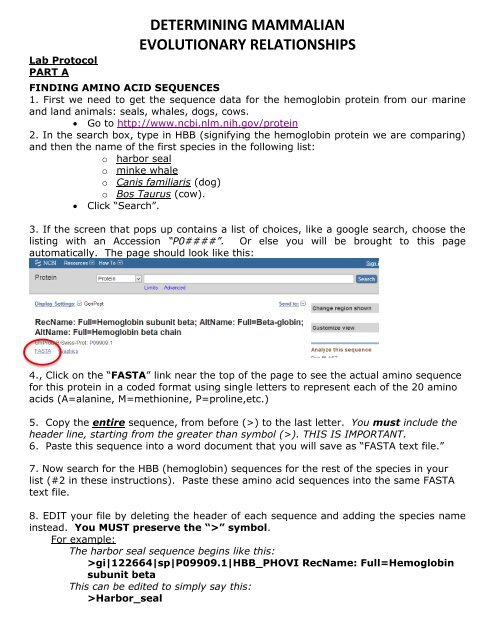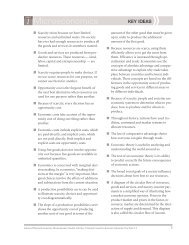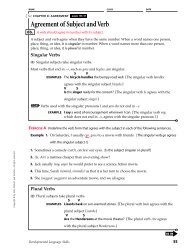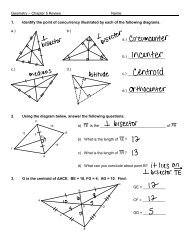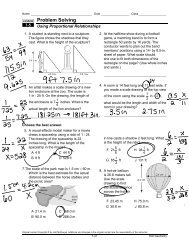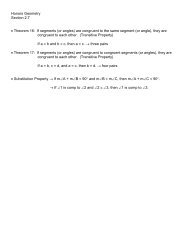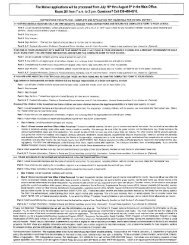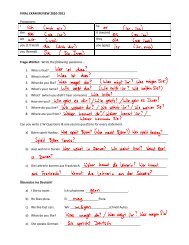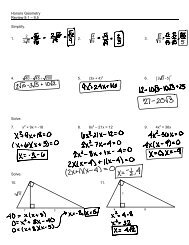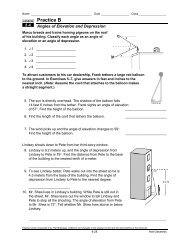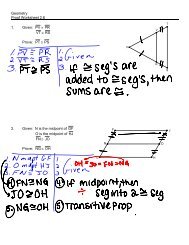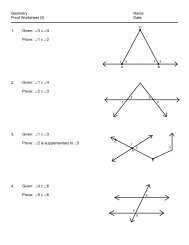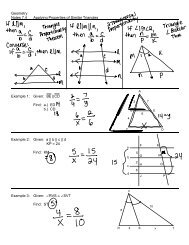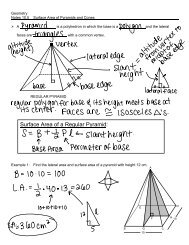Mammals Evolutionary Relationships BLAST lab protocol
Mammals Evolutionary Relationships BLAST lab protocol
Mammals Evolutionary Relationships BLAST lab protocol
Create successful ePaper yourself
Turn your PDF publications into a flip-book with our unique Google optimized e-Paper software.
Lab Protocol<br />
PART A<br />
DETERMINING MAMMALIAN<br />
EVOLUTIONARY RELATIONSHIPS<br />
FINDING AMINO ACID SEQUENCES<br />
1. First we need to get the sequence data for the hemoglobin protein from our marine<br />
and land animals: seals, whales, dogs, cows.<br />
Go to http://www.ncbi.nlm.nih.gov/protein<br />
2. In the search box, type in HBB (signifying the hemoglobin protein we are comparing)<br />
and then the name of the first species in the following list:<br />
o harbor seal<br />
o minke whale<br />
o Canis familiaris (dog)<br />
o Bos Taurus (cow).<br />
Click “Search”.<br />
3. If the screen that pops up contains a list of choices, like a google search, choose the<br />
listing with an Accession “P0####”. Or else you will be brought to this page<br />
automatically. The page should look like this:<br />
4., Click on the “FASTA” link near the top of the page to see the actual amino sequence<br />
for this protein in a coded format using single letters to represent each of the 20 amino<br />
acids (A=alanine, M=methionine, P=proline,etc.)<br />
5. Copy the entire sequence, from before (>) to the last letter. You must include the<br />
header line, starting from the greater than symbol (>). THIS IS IMPORTANT.<br />
6. Paste this sequence into a word document that you will save as “FASTA text file.”<br />
7. Now search for the HBB (hemoglobin) sequences for the rest of the species in your<br />
list (#2 in these instructions). Paste these amino acid sequences into the same FASTA<br />
text file.<br />
8. EDIT your file by deleting the header of each sequence and adding the species name<br />
instead. You MUST preserve the “>” symbol.<br />
For example:<br />
The harbor seal sequence begins like this:<br />
>gi|122664|sp|P09909.1|HBB_PHOVI RecName: Full=Hemoglobin<br />
subunit beta<br />
This can be edited to simply say this:<br />
>Harbor_seal
DETERMINING MAMMALIAN<br />
EVOLUTIONARY RELATIONSHIPS<br />
Also, make sure there is a blank line left in between each sequence.<br />
This is what it should look like when it is edited:<br />
ALIGNING AND ANALYZING YOUR SEQUENCES<br />
9. Google search: ClustalW2. Choose the program with the website:<br />
www.ebi.ac.uk/Tools/msa/clustalw2<br />
10. Copy and paste your FASTA text file (all 4 sequences at the same time) into the<br />
“Step 1” box and submit this data.<br />
11. Click on the “results summary” tab under the Results heading.<br />
Observe the last column titled Score on the Scores Table. Click the double arrow once<br />
to see the scores in ascending order.<br />
These scores show the percent similarities between the species’ hemoglobin sequence,<br />
and therefore, their EVOLUTIONARY RELATIONSHIP. The more amino acids they<br />
have in common, the more closely related the species! Use this to fill in the table in Part<br />
A of your <strong>lab</strong> handout.<br />
12. Now click on “guide tree” tab under the Results heading.
DETERMINING MAMMALIAN<br />
EVOLUTIONARY RELATIONSHIPS<br />
Observe the phylogenetic tree and copy this onto the designated spot in Part A your <strong>lab</strong><br />
handout.<br />
PART B<br />
15. Below are the representative marine mammals for your new cladogram:<br />
minke whale (baleen whales)<br />
dolphin (toothed whales)<br />
harbor seal<br />
walrus<br />
river otter<br />
manatee<br />
16. In this exercise, we will compare the hemoglobin proteins of these marine mammals<br />
to some representatives of the major taxa of land mammals:<br />
carnivora: dog, Canis familiaris<br />
rodentia: rat, Rattus norvegicus<br />
herbivore: cow, Bos Taurus<br />
primates: human,Homo sapiens<br />
proboscidea: African elephant, Loxodonta africana<br />
marsupials: red kangaroo, Macropus rufus<br />
17. Reminder: We are testing the hypothesis that all marine mammals have a common<br />
land mammal ancestor.<br />
18. Once again, use the hemoglobin beta protein sequence to test this hypothesis. You<br />
will be discovering a tree with all the marine mammals and all the land mammals listed<br />
above.<br />
19. Follow the complete process we used in Part A to obtain your amino acid sequences<br />
from GenBank, align them in ClustalW2, and build the evolutionary tree<br />
20. Then use your phylogenetic tree to determine the evolutionary relationships<br />
amongst marine mammals and the representative land mammals. Determine whether<br />
your hypothesis was supported by the molecular data.


